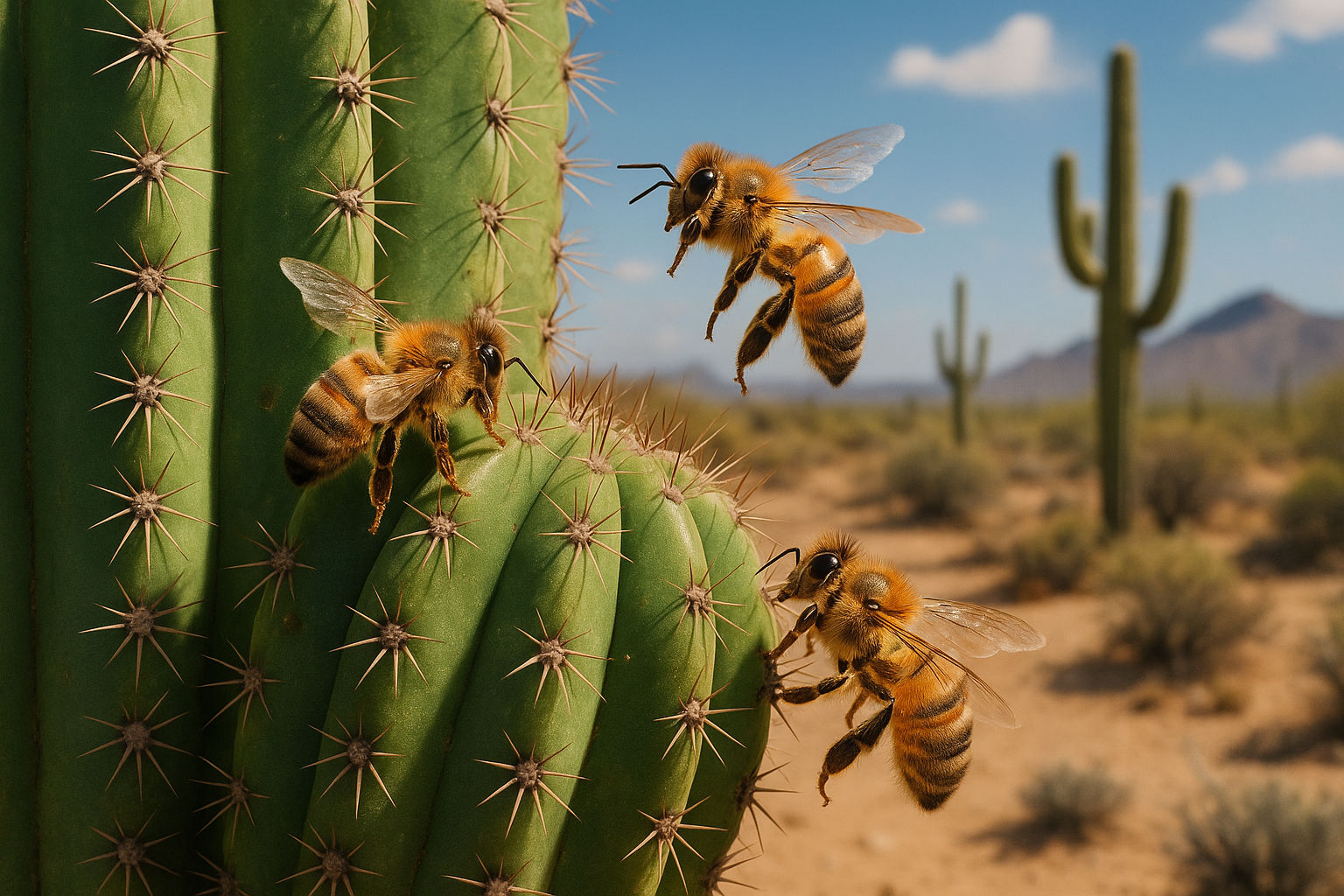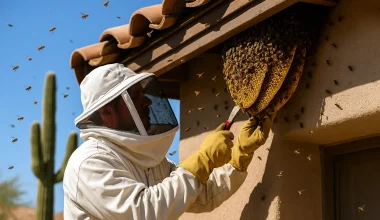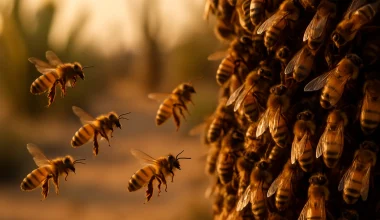Arizona is home to over 1,300 species of bees, making it one of the most diverse bee habitats in the United States. From gentle native pollinators to aggressive Africanized honey bees, understanding which species you’re dealing with is key to both safety and conservation.
In this guide, we’ll break down the most common types of bees in Arizona, how to identify them, and what to do if you find a hive or swarm on your property.
Common Bee Species in Arizona
1. Western Honey Bee (Apis mellifera)
The most recognizable bee in North America. Often domesticated for honey and crop pollination.
- Color: Golden-brown with black bands
- Behavior: Docile when undisturbed; may sting if provoked
- Habitat: Managed hives, wild colonies in trees, walls, sheds
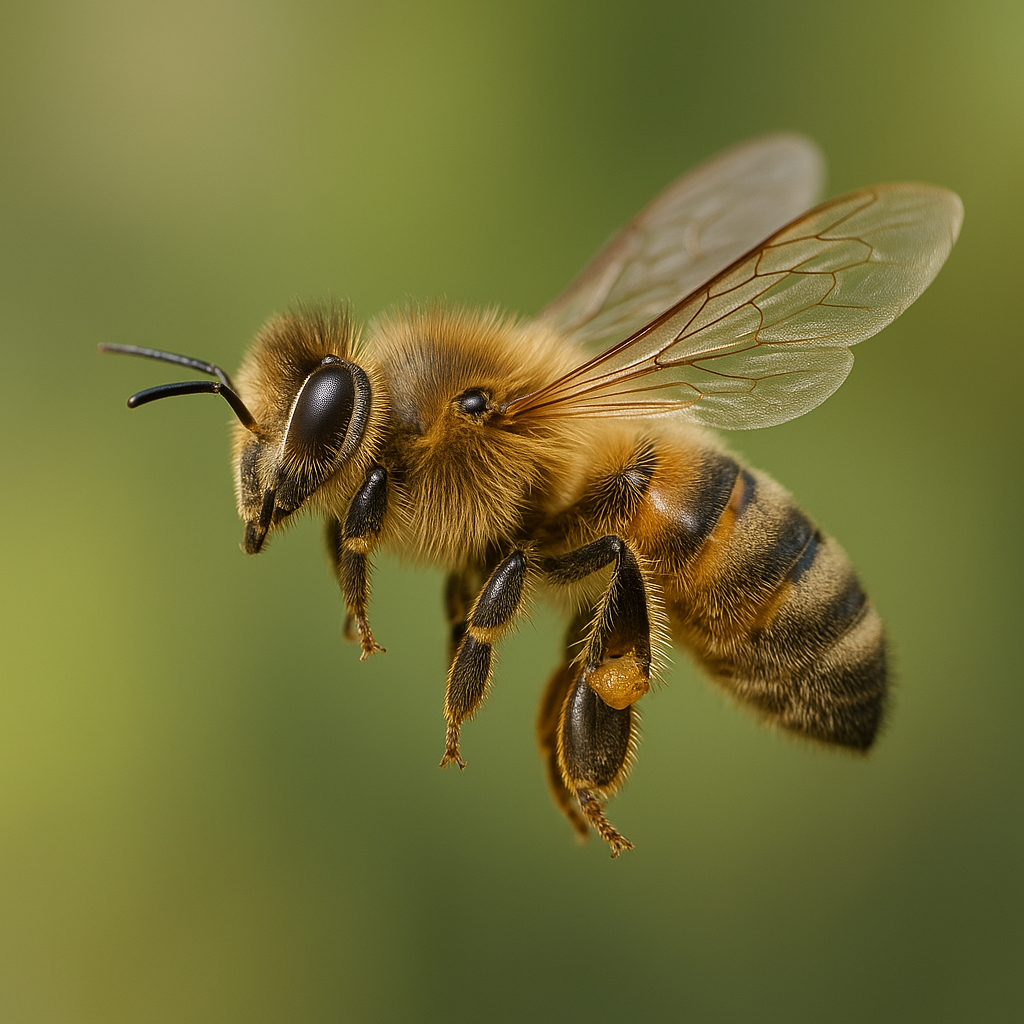
2. Africanized Honey Bee (Apis mellifera scutellata)
A hybrid of the Western honey bee, these bees are more defensive and common throughout Arizona.
- Color: Nearly identical to Western honey bees
- Behavior: Extremely defensive; will chase intruders
- Habitat: Wall voids, utility boxes, roof eaves
⚠️ Warning: Africanized honey bees are dangerous. In July 2025, a Scottsdale man died after disturbing a hive while working on a roof. Two others were hospitalized after enduring hundreds of stings. According to local experts, “they leave a scent on your skin that tells everyone else to attack.”
➤ Read the full story on AZ Central
Note: Many feral hives in Arizona are now Africanized to some degree. Learn more about our bee removal services if you suspect a hive on your property.
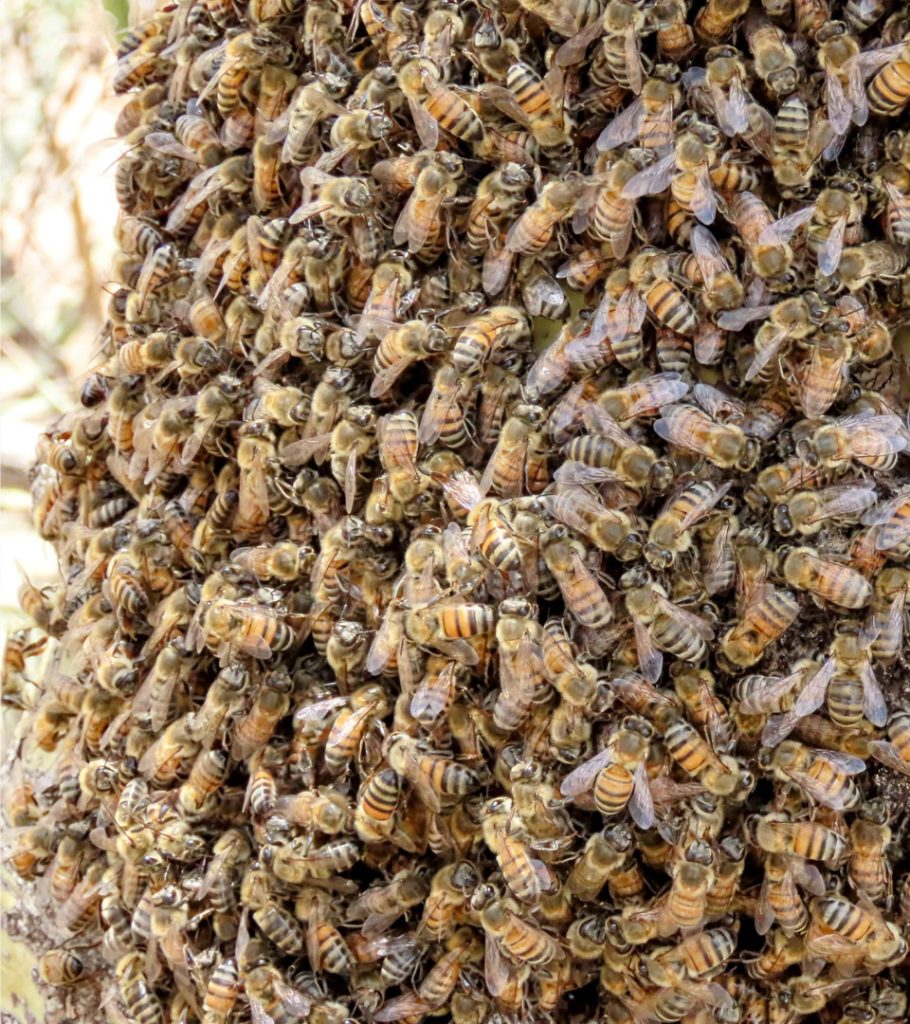
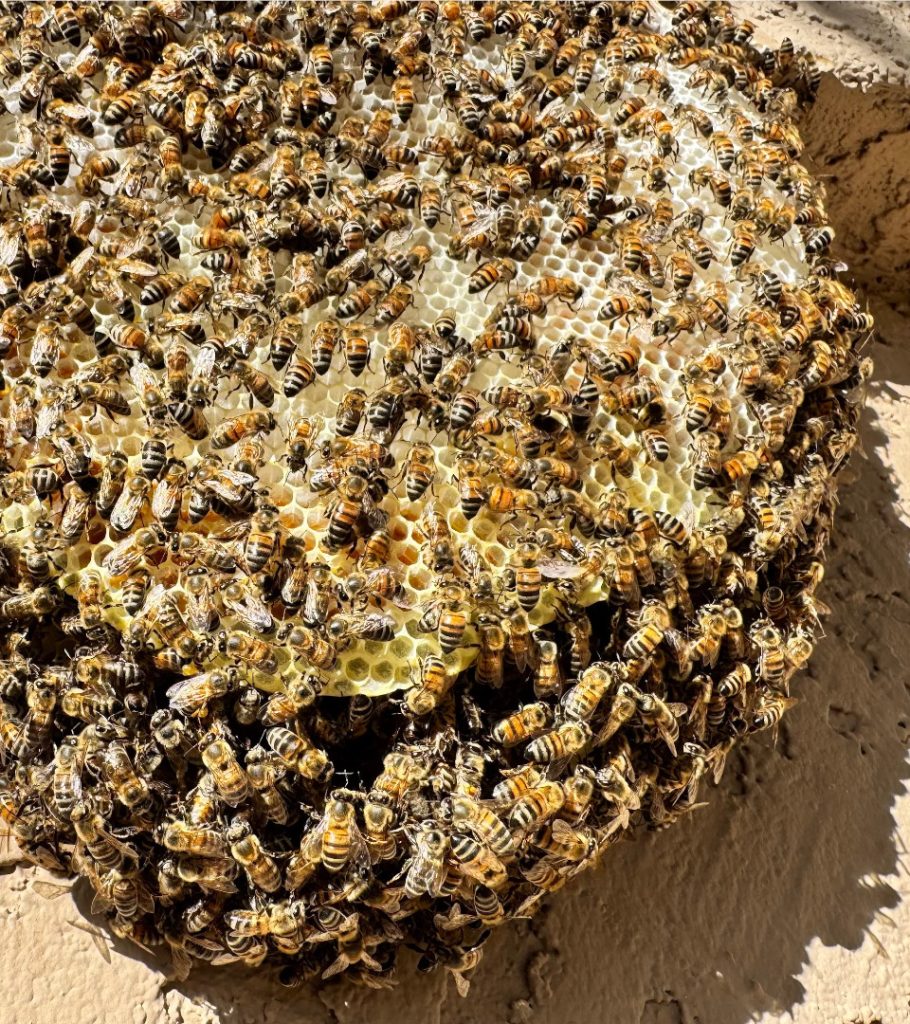
3. Carpenter Bees (Xylocopa varipuncta)
Large, black bees that tunnel into wood.
- Color: Metallic black or bluish with shiny abdomens
- Behavior: Males are territorial but don’t sting; females rarely sting
- Habitat: Decks, eaves, wooden fences
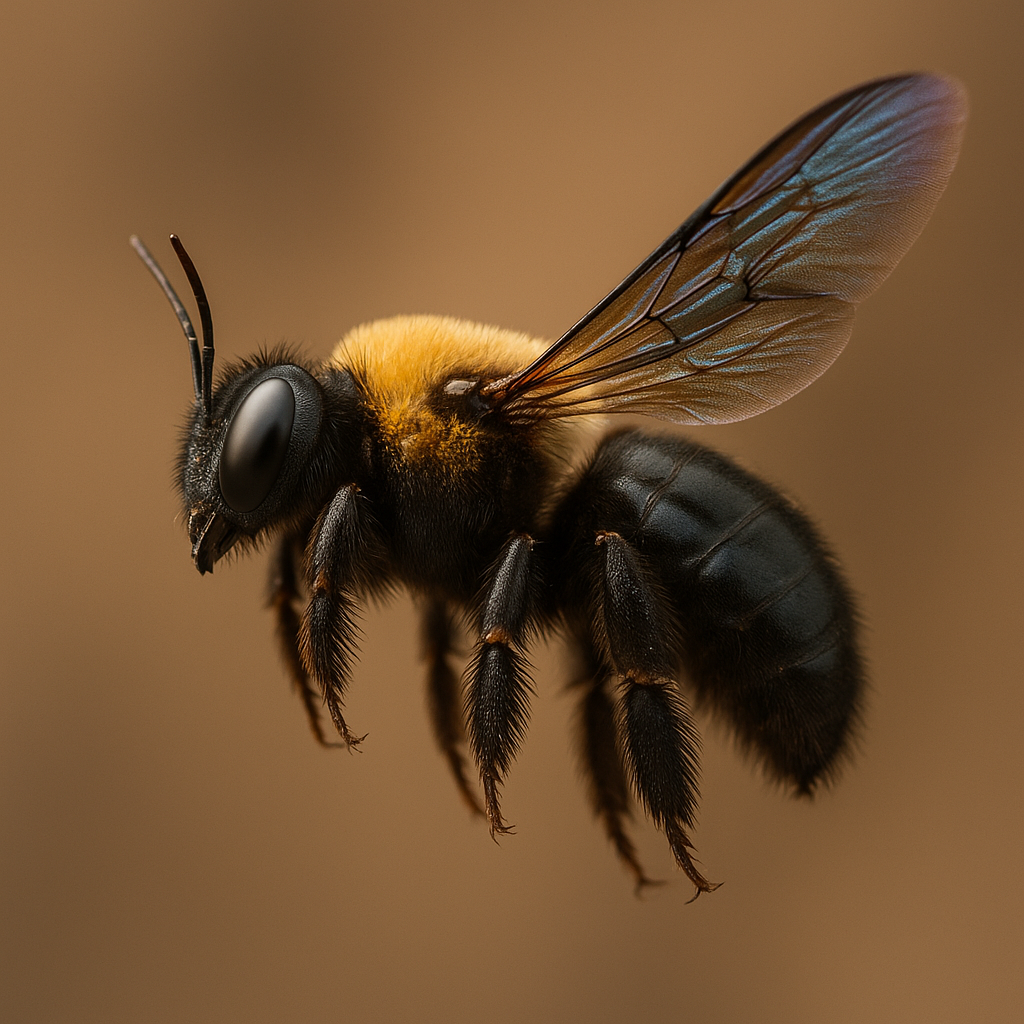
4. Leafcutter Bees (Megachile spp.)
Solitary bees known for cutting perfect circles from leaves.
- Color: Black with fuzzy pale bands
- Behavior: Non-aggressive; excellent pollinators
- Habitat: Holes in wood, plant stems, pre-existing cavities
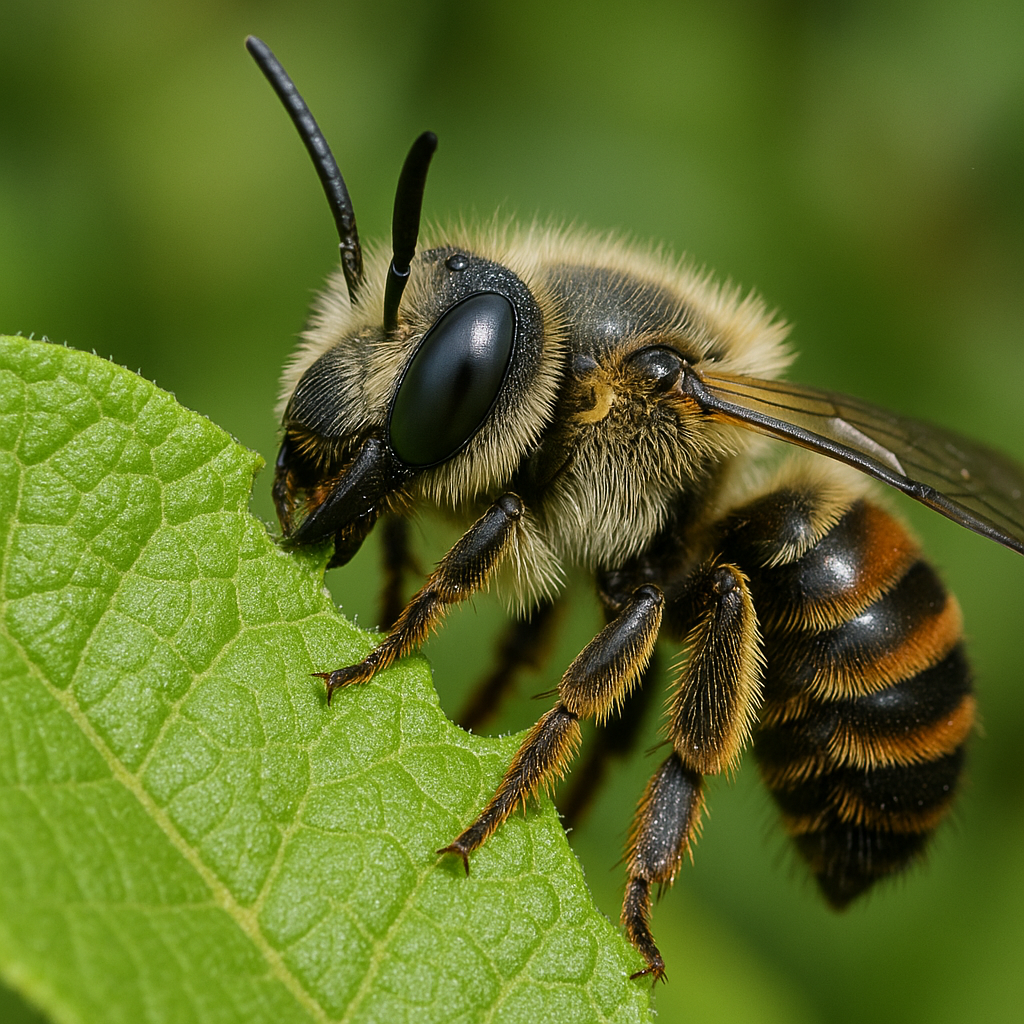
5. Cactus Bees, Mason Bees, Sweat Bees, and More
Arizona’s deserts host dozens of lesser-known native bee species, many of which are critical to our native flora. For a deep dive, check out the University of Arizona Bee Identification Guide (PDF).
Arizona Bee Identification Resources
Want to ID a bee you saw recently? These guides are a great place to start:
- Arizona Bee Identification Guide – ACIS
- A-Bee-Cs of Arizona’s Native Bees – Desert Museum
- Common Bees in Arizona – BirdWatching HQ
- 25 Types of Bees in Arizona – The Pet Enthusiast
- Types of Bees in Arizona – Animal of Things
When to Call a Professional
If the hive is:
- In a wall void, attic, or underground
- Showing signs of aggressive behavior
- Near a public path or residential area
Then it’s time to contact Bee Removal Phoenix. We offer live bee removal and relocation services across: Phoenix, Scottsdale, Mesa, Chandler, Tempe, and many more cities in the Valley.
Explore all our service areas or request a quote today.
Frequently Asked Questions
Q: Are carpenter bees bad for my house?
A: Yes, over time carpenter bees can weaken wooden structures like decks, siding, and eaves by tunneling into them to lay eggs.
Q: How much does bee removal cost in Phoenix?
A: Prices vary based on hive location, size, and accessibility. For an accurate quote, click here.
Q: Is it illegal to kill honey bees in Arizona?
A: It is not illegal, but extermination is strongly discouraged. Live removal and relocation are better for the environment and pollinator health.
Q: What’s the difference between a swarm and a hive?
A: A swarm is a temporary group of bees looking for a new home. A hive is an established colony with comb, brood, and honey stores.
Why Trust Us?
This guide was written by Busy Bee Pest Solutions, a professional bee removal company with extensive experience handling Africanized, feral, and native bees across Arizona. Our team is trained in safe, humane, and effective bee removal practices with a focus on public safety and environmental responsibility.
